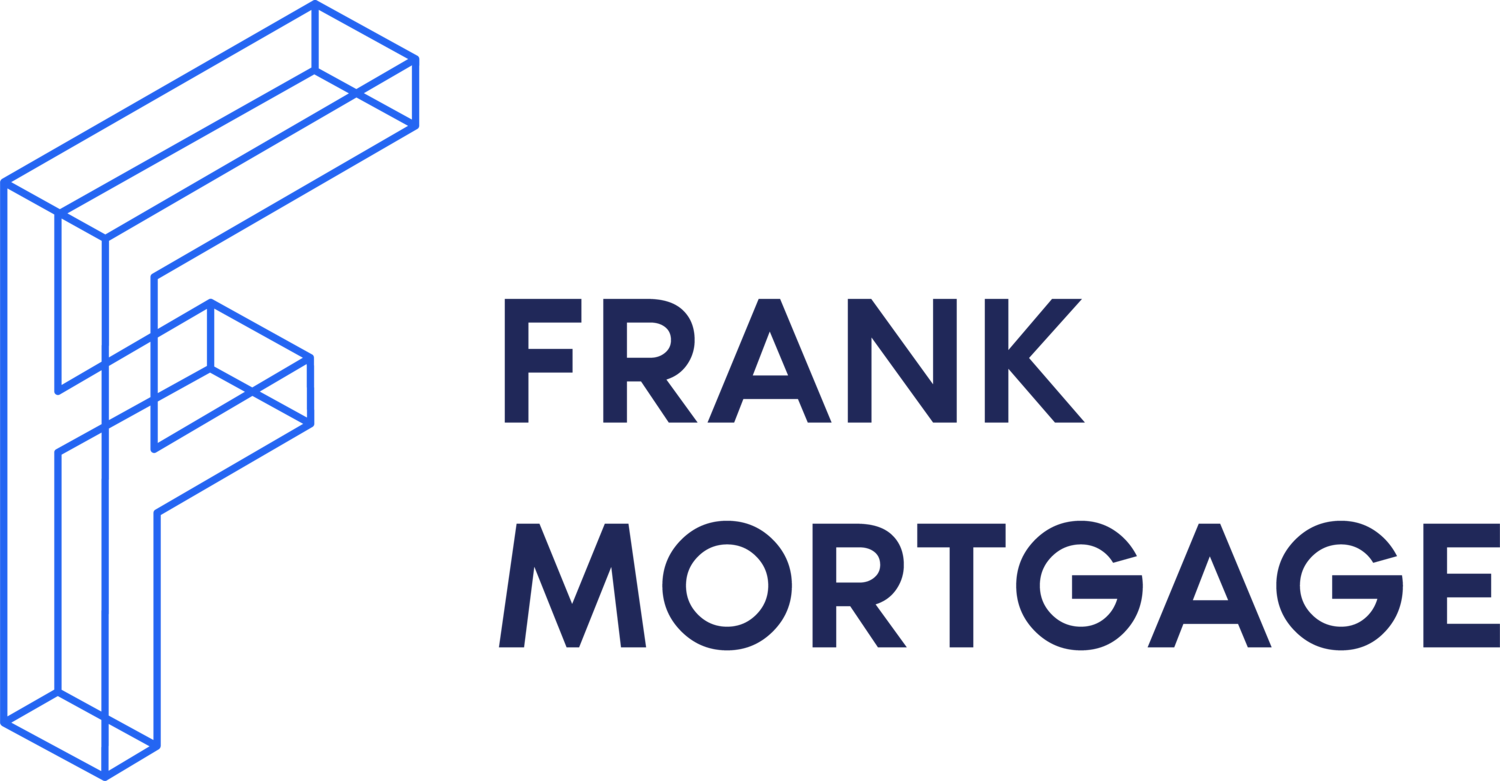New Mortgage Rules Effective Dec 15
More Meddling from Above – Will it Help?

High rates and increasing house prices have made qualifying for a mortgage in Canada more difficult. Recent declines in mortgage rates have been helpful but housing affordability is still stretched. Meanwhile, the government sees the housing and mortgage markets as opportunities to score political points and has repeatedly intervened in the market, at times stimulating demand and other times trying to curb the increase in credit growth and/or house prices.
Two new measures recently announced by the federal government come into effect on December 15, 2024.
- The maximum property value that can qualify for mortgage default insurance is increased from $1 million to $1.5 million. This is an attempt to lower the cost of down payments, especially in high-priced housing markets. For example, a minimum downpayment on a $1.5 million home would now be $125,000, which is $175,000 lower than the down payment required prior to this change. This rule change loosens a restriction put in place in 2012.
- 30-year amortizations are now available on insured mortgages for all first-time home buyers and to all buyers of new builds. This will reduce the cost of monthly mortgage payments so that more Canadians can afford a mortgage. The longer the amortization, the lower the payment, but borrowers considering a 30-year amortization need to be aware of the higher cost of debt servicing over the life of a mortgage with a 30-year amortization. This rule change partly reverses a restriction on mortgage amortizations put in place in 2012.
These recent rule changes are a continuation of frequent tinkering by the government in the mortgage market. Understanding the rules and keeping up with how they are constantly changing can be overwhelming, especially when bracing yourself against interest rate changes brought on by our central bank. Frank Mortgage was born from the belief that the mortgage finance system needs to focus more on the needs of customers. Despite Canada's stable market performance, regulatory changes have layered restrictive rules onto the borrower experience, altering the mortgage landscape significantly in the past decade. Due to our primary focus on the customer, we are concerned with how many of the challenges Canadians face today stem from broader government interventions. Many rule changes from the government work at cross purposes with regulatory changes and it is questionable whether they have been a net positive over time.
Have New Government Mortgage Rules Been Beneficial?
“I’m from the Government, and I’m here to help.”
The nine most terrifying words in the English language according to Ronald Reagan.
Have the myriad changes over the years been positive for the market? Government advocates will say yes. Those of us looking for evidence of these positive effects are never shown convincing data that proves their case. If you look to the overall state of the mortgage market, particularly through the lens of the individual homeowner, there are more problems today than there were over a decade ago. Despite Ottawa’s intentions, firsthand experiences of everyday Canadians navigating the housing and mortgage markets regularly show reduced affordability, unforeseen risks, and other negative outcomes contributed to, in part, by these frequent policy and interest rate changes.
History of Mortgage Rule Changes in Canada
Below is a list of the things our government, government agencies and regulators have done since 2010 that have a direct impact on mortgage borrowers. The key government entities that influence the mortgage market directly are the Department of Finance, the Canada Mortgage and Housing Corporation (CMHC) and the Office of the Superintendent of Financial Institutions (OSFI).
| Date | Rule Change |
|---|---|
| February 2010 | High-ratio insured mortgages with variable rates or terms less than five years must be qualified using the five-year posted rates |
| February 2010 | Max LTV for refinances reduced from 95% to 90% |
| February 2010 | Small rental property minimum down payment increased to 20% |
| January 2011 | Max amortization for insured mortgage reduced from 35 years to 30 years |
| January 2011 | Max LTV for insured refinances reduced from 90% to 85% |
| January 2011 | HELOCs no longer eligible for mortgage default insurance |
| June 2012 | Max LTV for insured refinances reduced from 85% to 80% |
| June 2012 | Homes valued at more than $1 million no longer eligible for mortgage default insurance |
| June 2012 | Max amortization for insured mortgages reduced from 30 years to 25 years |
| June 2012 | GDS and TDS limits set at 39% and 44%, respectively, for borrowers with a credit score of 680+ |
| December 2015 | Minimum down payment for insured mortgages changed to 5% of first $500,000 and 10% of the amount between $500,000 and $1,000,000 |
| October 2016 | All insured mortgages must be qualified using the 5-year posted mortgage rate |
| October 2016 | Eligibility for mortgage insurance for many low LTV mortgage types removed |
| January 2017 | CMHC increased fees for mortgage default insurance. Private insurers follow suit |
| October 2017 | Final OSFI B20 Guideline is introduced, requiring lenders to increased due diligence, exclude high LTV combinations, and implement the stress test |
| January 2018 | OSFI’s uninsured mortgage stress test is initiated. It requires OSFI regulated lenders to qualify borrowers at the higher of their contracted mortgage rate plus 2% or the benchmark fixed rate (the qualifying rate) published by the Bank of Canada |
| June 2020 | CMHC changed some underwriting rules for insured mortgages; i) raise minimum credit score from 600 to 680 for at least one of the borrowers, ii) max GDS ratio reduced from 39% to 35%, iii) max TDS ratio reduced from 44% to 42%, and several types of down payment no longer eligible |
| June 2021 | Minimum qualifying rate for both insured and uninsured mortgages increased to 5.25% (from 4.79%) |
| July 2021 | CMHC reversed it tightened underwriting rules implemented in June 2020, as noted above |
| May 2022 | Assignment sales now to be levied GST/HST |
| August 2022 | The Federal Government announces the new First Home Savings Account, allowing first time home buyers to save up to $40k toward their down payment, tax free |
| January 2023 | A temporary, two-year ban on foreign home buyers was implemented |
| January 2023 | House flippers are now subject to taxation on profits if the property is sold within 12 months of purchase |
| November 2023 | Federal Government introduced the Mortgage Charter. This is mainly an attempt to appear to be helping since most of its measures were already in place |
| February 2024 | Ban on foreign buyers extended to 2027 |
| April 2024 | 30-year amortizations possible on insured mortgages for first-time buyers of new build homes |
| April 2024 | Allow lenders to offer up to 35-year amortization periods for renewing borrowers who can demonstrate hardship |
| April 2024 | Increase the withdrawal limit on the RRSP homebuyers plan from $35,000 to $60,000. Also, extended the grace period for repayment of withdrawn funds by three years |
| November 2024 | OSFI removes the need to stress test a customer switching an uninsured mortgage to a new lender at renewal |
| December 2024 | 30-year amortization period allowed for insured mortgages for first-time homebuyers and any buyer of a new build home |
|---|---|
| December 2024 | The maximum property value permitted for an insured mortgage is increased from $1 million to $1.5 million |
| Expected in January 2025 | Mortgage insurance available on renovations for rentals - self contained units less than $2 million value, LTV up to 90% and max amortization of 30 years |
| Coming in Q1 2025 | OSFI introducing a portfolio limit for mortgages with a loan-to-income ratio greater than 4.5x |
Some of these measures are prudent from an underwriting risk perspective. Some seem to be incentives for new borrowers to be able to enter the housing market. Others are reversals of prior policy limits - the definition of tinkering. In our opinion, the amount of meddling in the market by government has not been justified. The list above does not even include other measures implemented by the federal government, provinces, and municipalities such as foreign buyer taxes, vacant home taxes, buyer assistance plans, and others too numerous to list here. The flood of changes just keeps on coming with no accounting for whether the existing changes have had the desired effect and with little consideration for how they affect the average Canadian.
Have All the Mortgage Changes Helped Canadians or the Banks?
As government was tweaking the rules for mortgage underwriting, we experienced an unprecedented period of interest rate intervention from central banks. The Bank of Canada artificially suppressed interest rates for close to a decade. This incented aggressive risk taking and leverage, fuelling a boom in housing prices, particularly after they pushed rates to record lows during covid. This pushed housing prices higher, making homes in many urban centres and their suburbs out of reach for the average Canadian. The central bank’s material rate interventions distorted demand and pricing in the market, stretched borrower finances and heightened risk to a degree that overshadows any risk reduction that the Department of Finance and OSFI can claim to have achieved through their various rule changes. At times it feels like the greatest risks to the housing and mortgage markets are not market forces, but rather government and central bank action.
The Canadian mortgage market has been a stellar performer from a risk perspective for our banks over time. Given this, why the constant tinkering from OSFI and government? Have banks truly benefited from all the changes to an extent that justifies the numerous hurdles borrowers now face? We are left to wonder if banks would be no worse off and mortgage borrowers better off without this laundry list of changes. For example, over 20% of mortgage originations in some Provinces in 2023 went into the private mortgage market (vs. less than 8% just a few years ago). Is that the desired outcome? No one benefits from that, other than private mortgage lenders and mortgage brokers.
The common headline in today’s market is “housing crisis.” Some point to the Bank of Canada as the culprit, others to excessive risk taking, still others blame supply shortfalls. Whatever the reason, the finger points directly at Ottawa and they are now scrambling to find measures to assist borrowers and homeowners to try to undo some of the damage they inflicted.
Is The Central Bank on Our Side?
The central bank must balance a wide variety of economic factors. Housing is not their only consideration. However, housing must be a key focus since it is an outsized portion of the economy in Canada relative to other developed economies. Yet, it appears they are more concerned about macro economic measures that appeal to economists and Bay St. than they are about the needs and experiences of all of us on Main St.
In February 2021, when economic growth lagged and the Bank of Canada was forcing rates to historic lows, concerns were expressed that this may be overheating the housing market. These concerns were dismissed by the Governor of the Bank of Canada who stated, “the economy is weak …” and “we need the growth we can get.” Has there ever been a better example of central authorities focusing on macro goals at the expense of the individuals they are supposed to serve? It was simply reckless, short-term thinking that we are all now paying for. Only a year later they were rapidly increasing rates to try an undo the damage they had done.
“Rates are very low and they’re going to be there for a long time,” said the Bank of Canada Governor in July 2020. If a person of authority says that and then 20 months later, they hike rates at unprecedented speed, are they credible? Rates were increased by 4% over a period of six months in 2022. They then rose further in 2023, after the infamous ‘pause’. Lever up Canada, buy everything you can, and then we will pull the rug out and make it so you can no longer afford the leverage we encouraged – Sincerely, the Bank of Canada.
Government continues to believe that they can positively influence the housing and mortgage markets. However, when you look at the totality of their recent measures, including central bank actions, it is hard to feel good about their impact. We have not even discussed record immigration levels and housing supply shortfalls. The effort to centrally control the market all seems astonishingly unorganized and poorly planned. But hey, at least 30-year amortizations are available for first-time homebuyers, right?
What Now?
In this environment of uncertainty, mortgage borrowers are cautious. While rates have been declining, the key word for new homebuyers and mortgage borrowers remains affordability. Don’t try to purchase more home than you can afford. Don’t take interest rate risks that you cannot afford to be wrong with. Budget for the future, setting aside a cushion to absorb unforeseen events. If something good comes from all of this, hopefully it is just that – a return to discipline and a focus on affordability.
We fight for our customers every day, trying to get them the best mortgage deal possible. This is why it upsets us when we see attempts from above to engineer outcomes. These most recent changes will be positive for many borrowers trying to enter the market, but we do wish the tinkering from above would cease. Instead, our government should get out of the way and reduce red tape, taxes, and development fees so we can build the supply that would help balance the market for all.
We are here to help you with your mortgage needs in any market environment. We can help you with a mortgage for a purchase, refinance, or a switch. Not only can we find great deals, but we are focused on reducing your stress. Put us to work for you, we can help you navigate these uncertain times. Please give us a call at 1-888-850-1337 and we can guide you through the mortgage process and find the home and financing you can afford. Or you can find us at www.frankmortgage.com.
Related Pages
About The Author

Don Scott
Don Scott is the founder of a challenger mortgage brokerage that is focused on improving access to mortgages. We can eliminate traditional biases and market restrictions through the use of technology to deliver a mortgage experience focused on the customer. Frankly, getting a mortgage doesn't have to be stressful.
Related Posts






